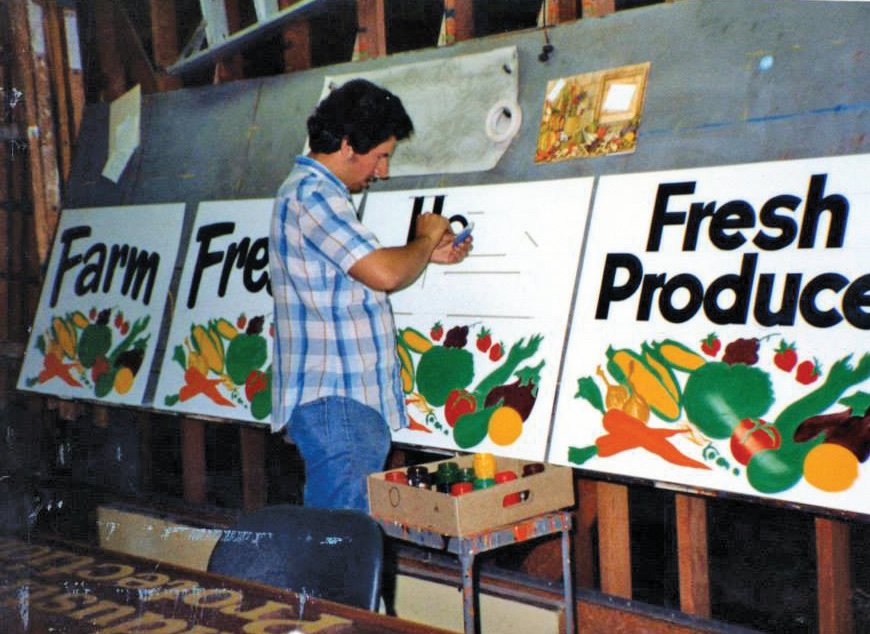My dad taught me almost everything he knew about the sign business. I learned more from working with other signpainters, and then expanded my overall knowledge of the business after vinyl came into popularity. When I turned 18, I was literally “traded” like a baseball player to a large electric shop so that I could learn all about neon, plastics, sheetmetal fabrication, channel-letter manufacturing, welding, etc.
The typical apprenticeship was designed to last about six years; then, you received your journeyman’s test. I started sweeping floors and organizing tools. Then, I learned the proper care and maintenance of brushes. At this stage, I also learned shop safety.
Once I had mastered cleaning brushes, I progressed to lettering strokes, basics that almost any lettering book shows you at first: verticals, horizontals, diagonals and curves. Then, I pieced those together to make letters and practiced over and over. I can remember lettering more than 100 “S” before I heard, “Hey, you got the hang of it! I’m proud of you! Now, let’s try some basic words.” If this were a normal apprenticeship, this might be when I learned to use a mahl stick, but my dad hated them. In hindsight, I wish I’d learned with one.
For words, I jumped back and forth from a lettering quill and paint to a Speedball pen and ink on paper. I was also learning about different materials used to make signs.Next, I learned pinstriping, scrollwork and borders. For this lesson, I striped straight lines 1/4 in. apart on our sliding-glass patio doors until they looked consistent. We didn’t do much car pinstriping, but this training came in handy for creating borders.
First, I learned the Gothic, Roman and Script alphabets, and tried to master lettering those by building up the letters with the appropriate brush. During that time, he also covered letter and line spacing, margins, color and typeface rules for layout, etc. I learned stroke lettering, and the rules for thick and thin strokes and script, such as never placing script on an arc.
My next lessons involved gluing, routing, sandblasting and handcarving wood signs. I also learned patternmaking with an Electro-Pounce machine and a wheel. I also learned truck and window lettering. Then, I learned the finer points of surface gilding, glass-gilding basics, and truck gilding.
I also learned how to paint showcards and basic screenprinting techniques. I didn’t spend much time on screenprinting, because you could order screenprinted signs so cheaply you’d be crazy to make them in-house.
Advertisement
The craziest part about my personal story is that my dad started me at the ripe old age of 11, and I was a journeyman signpainter before the age of 16. I was driven to jobs, completed work by myself and had my dad pick me up and collect the check because I wasn’t old enough to drive.
My dad was a truly exceptional man. He kept pushing me, and pulling me along with so many words of encouragement. At times, they seemed harsh, but they were always just what I needed at the time. There are at least five other men that owe their entire career and livelihood to my dad as well.



 Tip Sheet2 days ago
Tip Sheet2 days ago
 Business Management1 week ago
Business Management1 week ago
 Women in Signs1 week ago
Women in Signs1 week ago
 Real Deal3 days ago
Real Deal3 days ago
 Editor's Note1 week ago
Editor's Note1 week ago
 Maggie Harlow2 weeks ago
Maggie Harlow2 weeks ago
 Line Time2 weeks ago
Line Time2 weeks ago
 Product Buying + Technology1 week ago
Product Buying + Technology1 week ago







